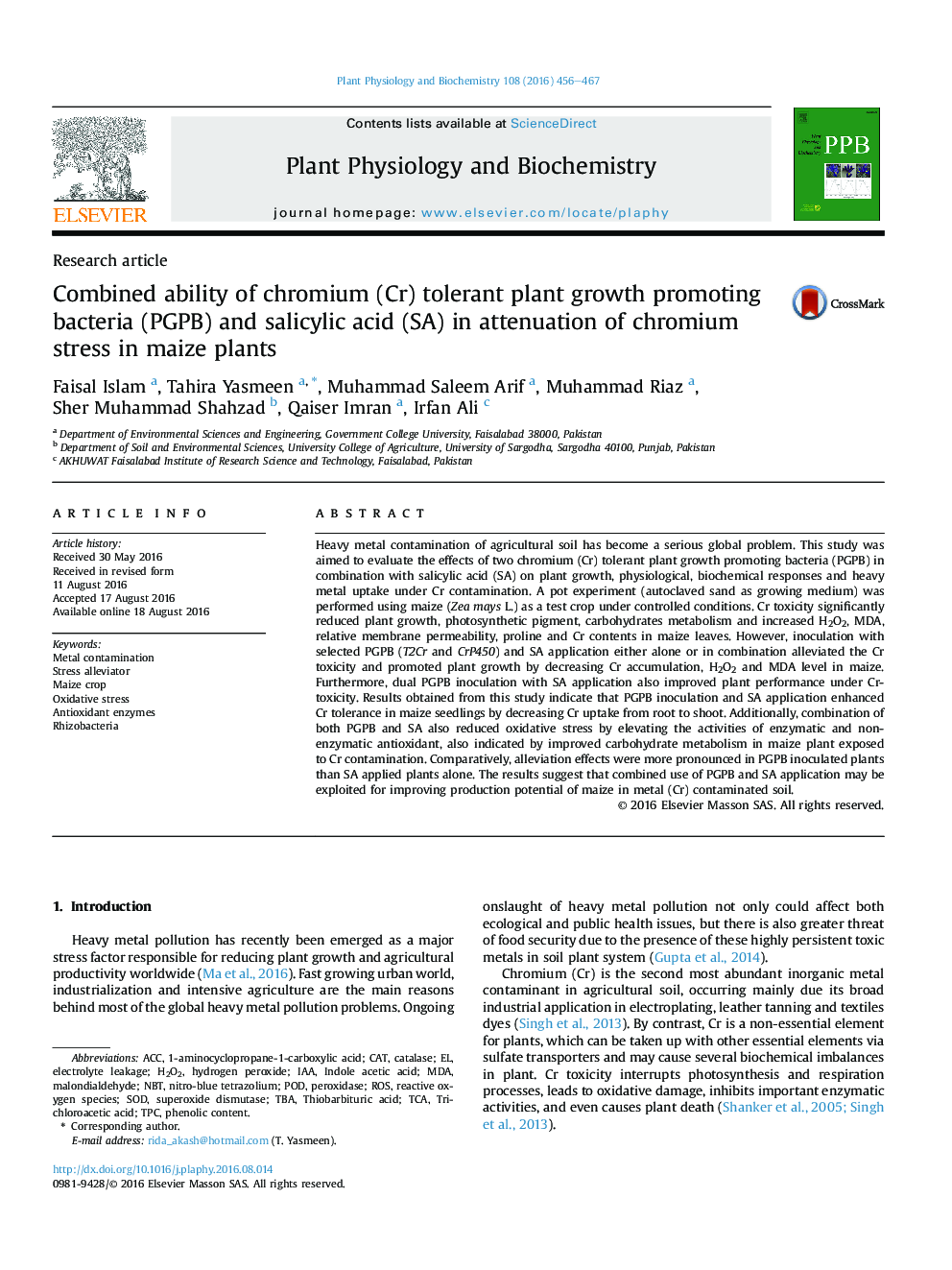| Article ID | Journal | Published Year | Pages | File Type |
|---|---|---|---|---|
| 2014733 | Plant Physiology and Biochemistry | 2016 | 12 Pages |
•Cr toxicity significantly reduced plant growth and development of maize plant.•Selected PGPBs inoculation and SA in different combinations alleviated Cr toxicity.•Dual PGPB inoculation with SA application improved plant performance under Cr toxicity.•PGPB and SA reduced oxidative stress by elevating enzymatic antioxidant activities.
Heavy metal contamination of agricultural soil has become a serious global problem. This study was aimed to evaluate the effects of two chromium (Cr) tolerant plant growth promoting bacteria (PGPB) in combination with salicylic acid (SA) on plant growth, physiological, biochemical responses and heavy metal uptake under Cr contamination. A pot experiment (autoclaved sand as growing medium) was performed using maize (Zea mays L.) as a test crop under controlled conditions. Cr toxicity significantly reduced plant growth, photosynthetic pigment, carbohydrates metabolism and increased H2O2, MDA, relative membrane permeability, proline and Cr contents in maize leaves. However, inoculation with selected PGPB (T2Cr and CrP450) and SA application either alone or in combination alleviated the Cr toxicity and promoted plant growth by decreasing Cr accumulation, H2O2 and MDA level in maize. Furthermore, dual PGPB inoculation with SA application also improved plant performance under Cr-toxicity. Results obtained from this study indicate that PGPB inoculation and SA application enhanced Cr tolerance in maize seedlings by decreasing Cr uptake from root to shoot. Additionally, combination of both PGPB and SA also reduced oxidative stress by elevating the activities of enzymatic and non-enzymatic antioxidant, also indicated by improved carbohydrate metabolism in maize plant exposed to Cr contamination. Comparatively, alleviation effects were more pronounced in PGPB inoculated plants than SA applied plants alone. The results suggest that combined use of PGPB and SA application may be exploited for improving production potential of maize in metal (Cr) contaminated soil.
